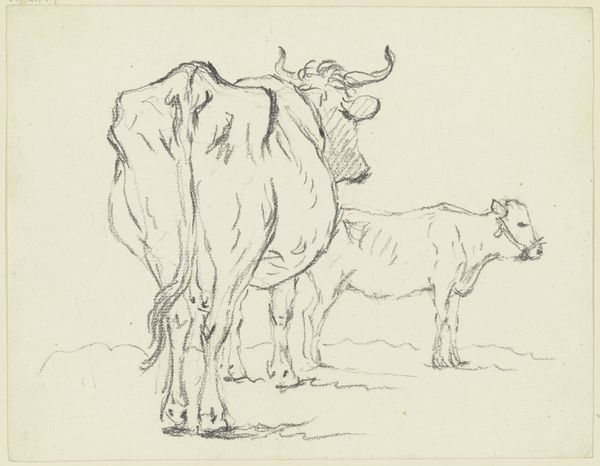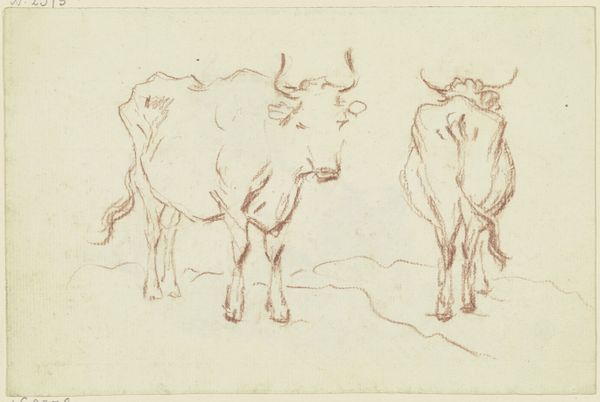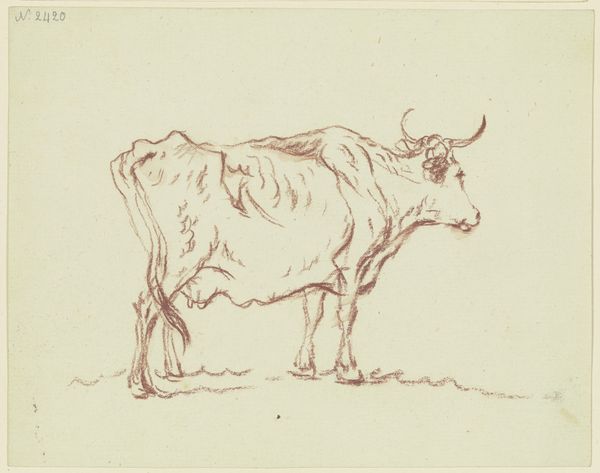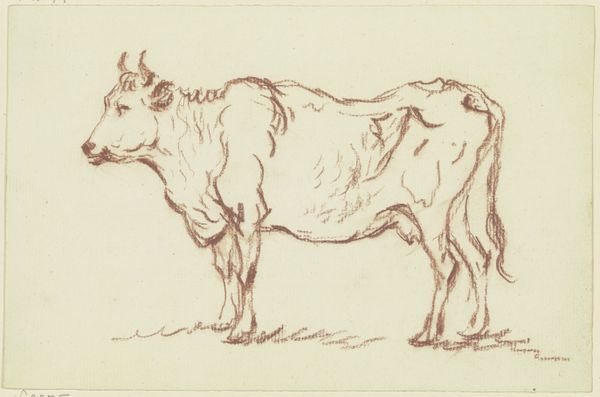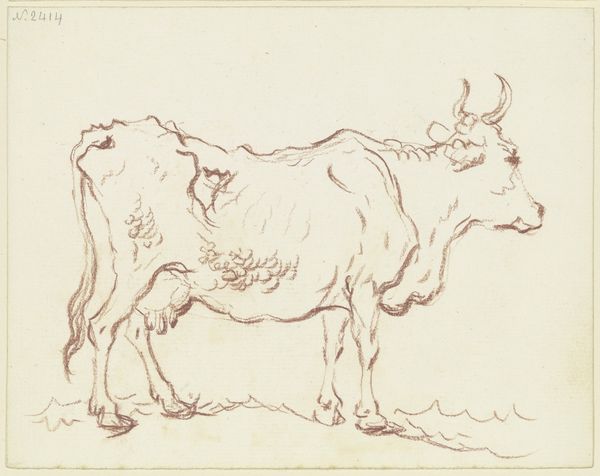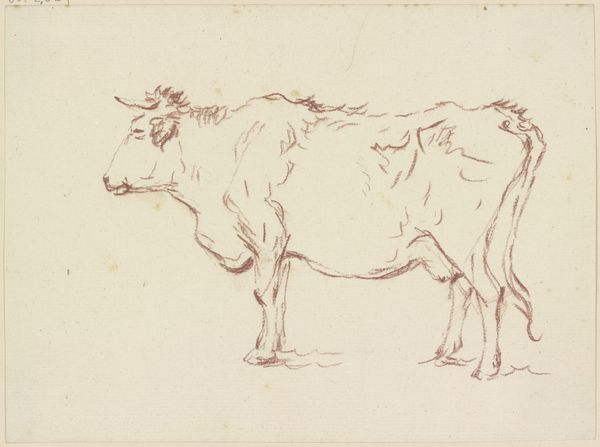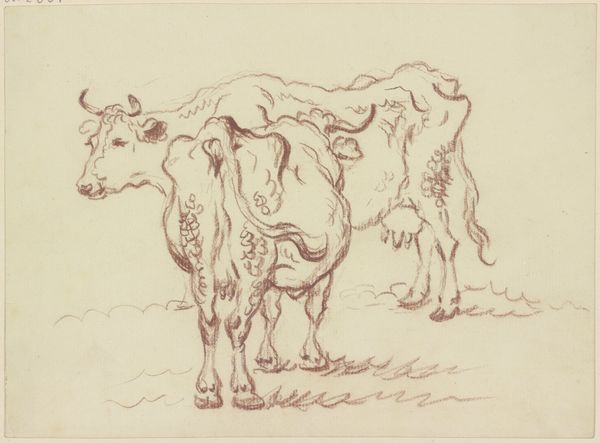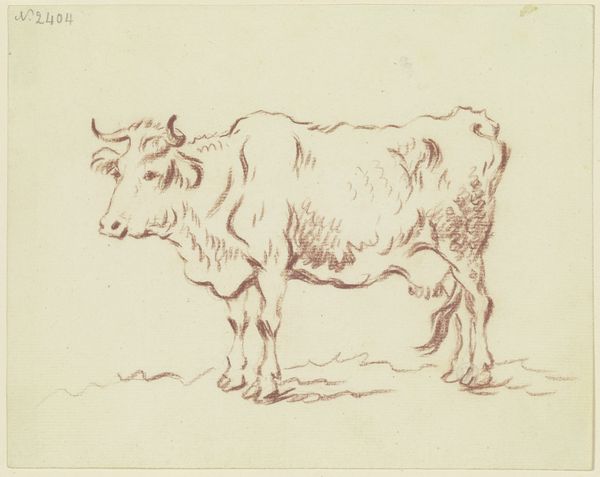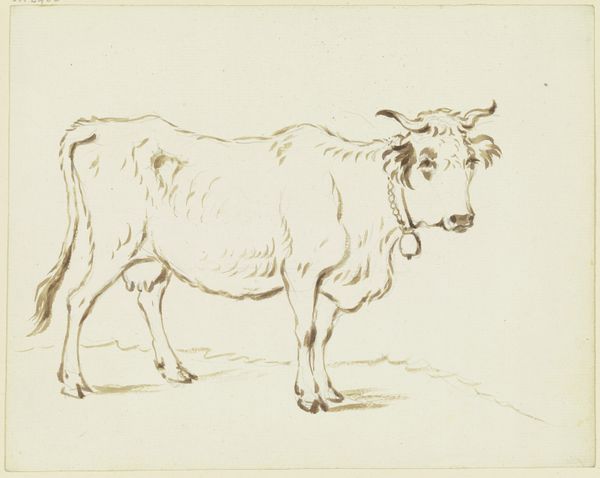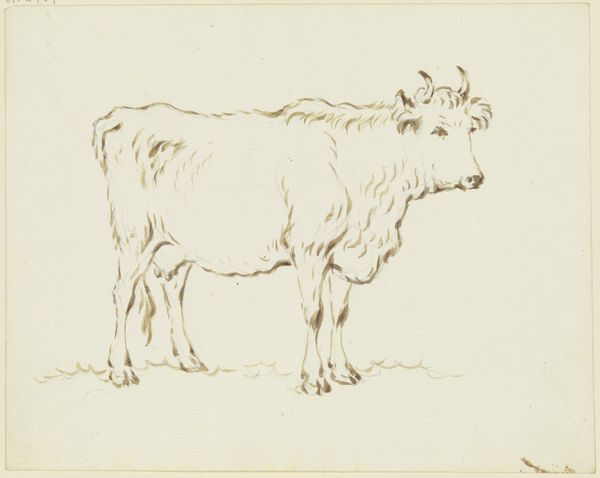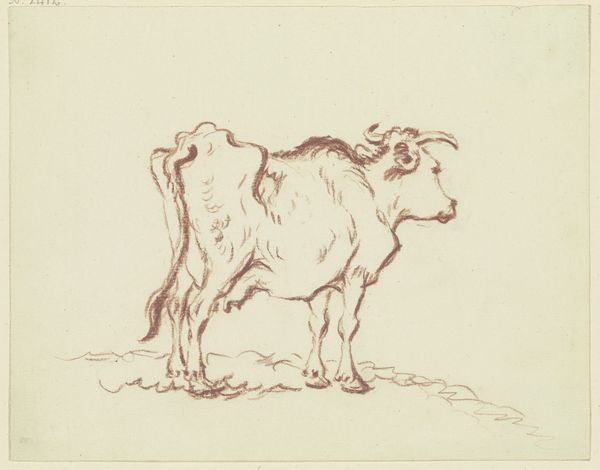
drawing, dry-media, pencil
#
drawing
#
landscape
#
figuration
#
dry-media
#
pencil
#
realism
Copyright: Public Domain
Curator: We’re looking at a pencil drawing here at the Städel Museum by Friedrich Wilhelm Hirt titled, “Stehende Kühe von hinten gesehen.” It translates to “Standing Cows Seen from Behind.” Editor: Well, they certainly are seen from behind! The drawing has a gentle, almost comical quality, though. A very immediate impression. Curator: Interesting. Why comical? I perceive it as more stoic and muted, despite its rapid execution. Perhaps it's the texture and color—the monochromatic brown pencil evokes a sense of earthiness and even antiquity. Editor: Perhaps “comical” is the wrong word. It is the sheer ungainliness, the rumps of these creatures. They take on a weight of something deeper. For centuries, the cow has been associated with nourishment and motherhood, symbols of prosperity, even sacrifice. Do you read that in it? Curator: I think that's definitely *a* reading. I’m struck, however, by the artist’s choice to position us behind the animals. There's a conscious obscuring. The composition highlights their forms and mass through shadow, and a study of form. Editor: But by only showing the rear view, does that suggest a refusal to engage directly, perhaps? Turning one's back on traditional bucolic imagery and ideals of nature? Curator: It certainly resists the picturesque. However, it allows us to concentrate solely on mass and presence without any sentimental distraction of facial expression or interaction. A deliberate reduction to basic shapes. Editor: It’s curious. There's a tension, a push and pull. Do we embrace our traditions or move away from them? I see how these deceptively simple cow sketches speak to so much. Curator: Indeed. An artwork may present itself humbly and without color and yet yield very many considerations on the artistic process. I do value how your viewpoint, by interpreting its deeper symbolic weight, allows us to reflect upon these images’ potential for transformation and significance.
Comments
No comments
Be the first to comment and join the conversation on the ultimate creative platform.

